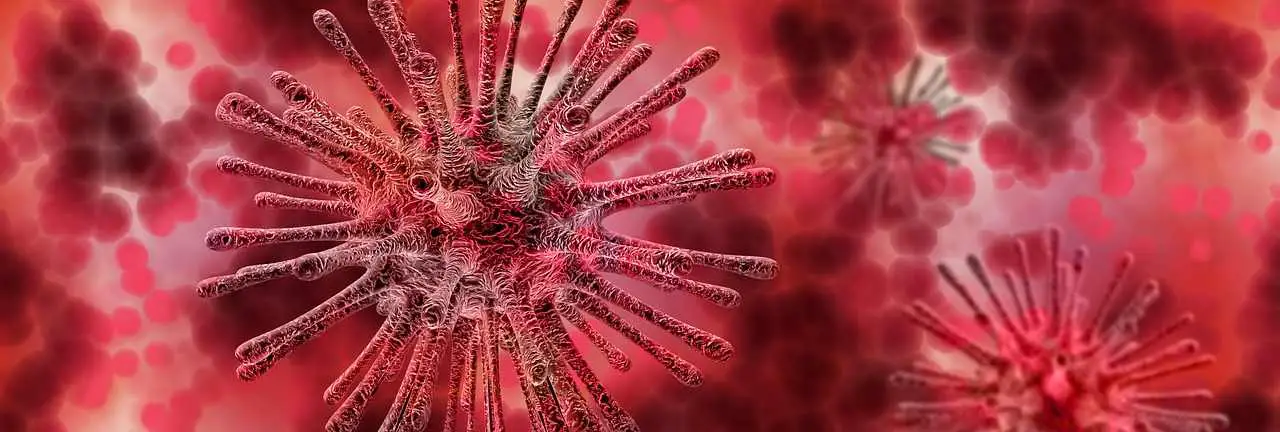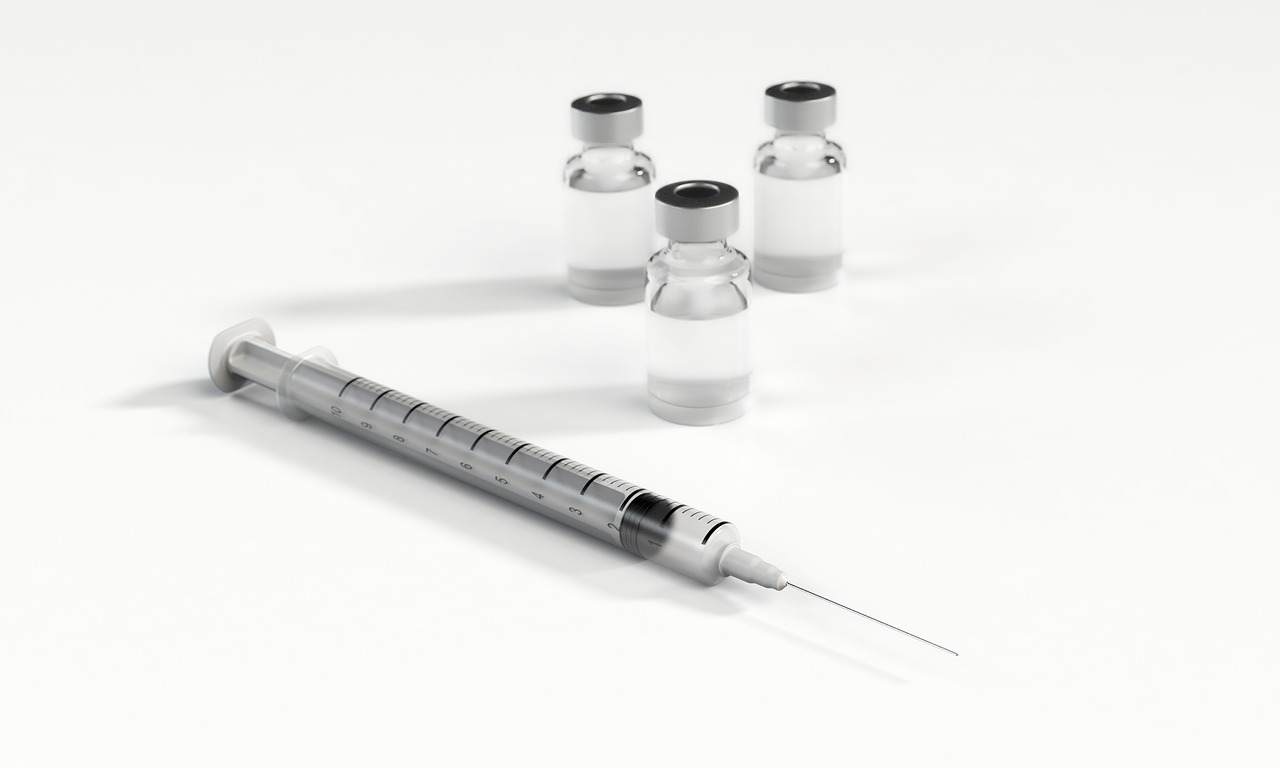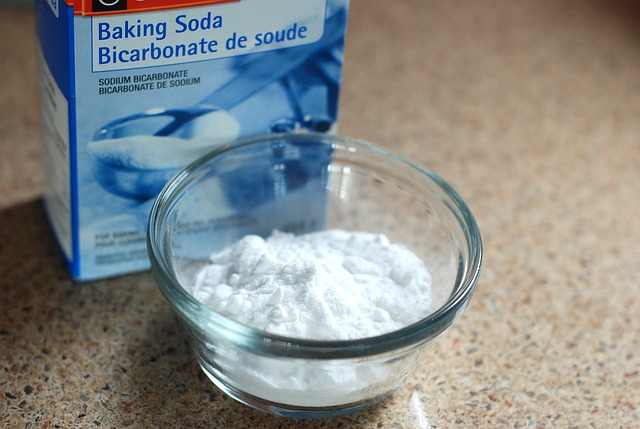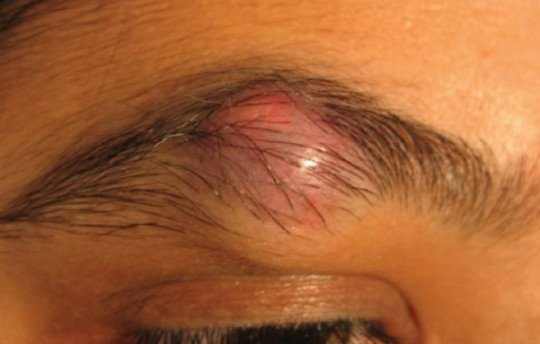Cyst on eyebrow appears as a raised bump in the area of the eyebrow. When it erupts, it might be asymptomatic, or it could cause pain or sensitivity. These cysts can vary in size, but in most cases, it’s nothing to worry about. There are some cases, however, that the large cysts cause uncomfortable symptoms and therefore require immediate medical attention.
Here is an insight into what causes the cyst, removal, treatment, and how to get rid of the cyst at home. We have also provided some images to help with a visual understanding of how the cyst looks like.
What causes a cyst?
Cysts can develop anywhere on the skin and are caused by various conditions. Eyebrows are one of the common places that develop such cysts. The following are the common causes of this condition and the symptoms accompanied by each.
1. Allergic reactions
These reactions can be caused by the use of facial and cosmetic products that contain ingredients that can harm your skin on the eyebrows, which is very sensitive. This condition is accompanied by an inflammation of the sinus, which is characterized by eyebrows.
2. Folliculitis
This is a condition that is caused by inflammation of one more hair follicles in the eyebrows. The inflammation can be a result of blocking the follicles or damage caused by the plucking of the eyebrows. The swellings appear as small bumps on the skin.
3. A sebaceous cyst
This kind of cyst develops as a result of blocking or damage to the sebaceous glands. It is often painful in touch and may have a dark-colored area visible on the skin surface. This condition can be treated using antibiotic creams. You may also have it removed to avoid the chances of recurring. The contents of the cyst are cheesy white fluid.
4. Infections

Bumps may erupt on your eyebrow area due to infections, which are mostly caused by piercings and ingrown hairs. Any kind of injury to the area may result in a pimple. You may also suffer from allergic eczema, which resembles a burn. This condition causes the skin of your eyebrows to develop cysts that may weep or ooze.
Eyebrow cysts
Eyebrow cysts are slow-growing, smooth bumps that can be rolled under the skin. They are very common, and most of them are painless. They can, however, become painful, especially if they get infected, inflamed, or ruptured.
If left unattended, the bacterial infection on the cyst can lead to the formation of an abscess or a painful boil on the eyebrow.
Another reason for a painful bump under eyebrows is ingrown hair. This condition is very in women because they frequently apply hair removal products to shape eyebrows.
When the eyebrow hairs eventually grow back, the follicles can grow inwards at times. This condition is called trans-follicular penetration. You may also stand a risk of developing this condition if you cut your eyebrow hair at very sharp angles or even when the cut edge of hair is left underneath the skin.
Sometimes you may have ingrown hairs when the hair grows while slanted into the skin, instead of the normal breaking, which is horizontal.
You, therefore, need to get rid of such cysts to prevent further infection or to recur in the future. Some may grow so big and may need to be drained. Alternatively, you can administer a cortisone injection for large inflamed cysts; this helps shrink it.
1. Dermoid cyst
A Dermoid cyst is a saclike growth that contains an array of developmentally mature, solid tissues. It frequently contains skin, hair follicles, and sweat glands.
Some contain structures such as clumps of long hair, nails, sebum pockets, fluid, and cartilage, and thyroid tissue. These cysts grow slowly and are not tender unless you rupture them. They contain mature tissue and are nearly always benign, while it is in very rare cases that they are malignant.
These cysts normally occur wherever a teratoma can occur, and they usually occur on the face, inside the skull, on the lower back, and in the ovaries. The following is an insight into the main areas where dermoid cysts normally occur;
Ovarian Dermoid cysts
These are growths that develop in women during her reproductive years. Ovaries normally grow cyst-like structures after follicles each month. Immediately after an egg is released during ovulation, the follicles deflate. Some fluid may accumulate inside the follicle, forming a cyst.
These cysts range in size, and the smallest ones are functional cysts, which resolve spontaneously.
Dermoid cysts are present at birth and are larger ones. They develop characteristics of mature cells and could bring along some complications such as torsion, rupture, infection, or cancer. For that reason, they require removal with either conventional surgery or laparoscopy (surgery that involves the use of small incisions, along with specially designed instruments to enter the abdomen or pelvis)
Periorbital Dermoid cysts
These dermoid cysts are common in young children and are often near the lateral aspect of the eyebrow. You can treat these cysts depending on the perceived amount of risk. Removal is by excision, though you should observe it before making that decision. This condition can recur in the case of inflammation or disruption.
These cysts may also appear during pregnancy when things like hair, sweat glands, oil glands, and fatty tissue get trapped in the skin as the baby grows. They are present at birth and are common, and they grow slowly. They are neither painful nor harmful to a child’s health.
You may remove them earlier before they get infected to avoid cases like scarring.
Dermoid cysts of the spinal cord
These cysts are rare and can only account for 1% of intramedullary spinal cord tumors. They are connected to the skin surface by a narrow connection from a deep pit in the skin known as a sinus tract.
These cysts most often involve the lumbosacral region than the thoracic vertebrae. There are several theories to explain the pathogenesis of spinal dermoid, which may be acquired or congenital.
- Acquired dermoid– these may arise from the implantation of the epidermal tissue into the subdural space, which could be during needle puncture or surgical procedures on the closure of a dysgraphic malformation.
- Congenital dermoid– these are thought to arise from cells whose position is correct but may fail to differentiate into the correct cell type. It is believed that the inclusion of cutaneous ectodermal cells occurred early in embryonic life, and then the displaced pluripotent cells developed into a dermoid lesion.
2. Sebaceous cyst
Sebaceous cysts are the most common non-cancerous cysts on the skin. The reason for the name sebaceous cysts is because they originate from the sebaceous glands and contain sebum as well. The cysts lie beneath the skin and form dome-shaped lumps attached to the epidermis, which is movable over the underlying tissues.
They occur primarily on the face, shoulder, or chest. In males, they commonly appear on scrotum and chest areas where there is more hair.
These cysts are extremely common in the population and occur at any age. They are not contagious and do not run the risk of developing cancer, but they can get infected. There are several causes of these cysts, which include;
- Blocked sebaceous glands
- Swollen hair follicles
- Excessive production of testosterone hormone
3. Epidermoid cyst
Epidermoid cysts are small non-cancerous bumps that appear beneath the skin. They can appear anywhere on the skin but are common on the face, neck, and trunk. They are normally slow-growing and cause no pain, and therefore they may be left untreated unless they get infected. These cysts are common compared to sebaceous glands.
These cysts have been referred to various terms, including follicular infundibular cysts, epidermal inclusion cysts, and epidermal cysts. Epidermal inclusion cysts are common cutaneous lesions that represent the proliferation of squamous epithelium within a confined space in the dermis or sub-dermis.
Epidermoid cysts can be caused by a proliferation of epidermal cells within a circumscribed space of the dermis. Research has also suggested that human papillomavirus (HPV) and exposure to ultraviolet light (UV) may play a major role in the formation of some epidermoid cysts, particularly verrucous cysts with coarse hypergranulosis.
Chronic irritation to the epithelial lining of the cyst plays a major role in malignant transformation according to research.
Recurring cyst under eyebrows
Skin cysts are little pockets of tissue under the skin that are filled with fluid, pus, or some other materials. These bumps are caused by either infections or a blocked sebaceous gland.
These are tiny glands near the surface of the skin that release oil, also called sebum, which moisturizes the skin and hair follicles. They are:
- smooth to touch
- often painless
- develop gradually
- are generally treated by draining the cyst or by use of antibacterial creams or lotions
However, they may recur if the infection causing the cyst is not completely cured, or the contents of the cyst, including the walls, are not completely cleared.
Cyst between eyebrows
Cyst between eyebrows is a common condition among adult men and women. They are commonly known as cystic acne and may develop as a result of clogged pores. If you have an oily T-zone, you are more likely to develop red bumps between your eyebrows as a result of trapped sebum in the pores as well as p. acnes bacterium, which is responsible for causing inflammation on the skin.
You may get the acne cysts from some lifestyle habits like wearing wrong cosmetics, like eye shadow or foundation, which could be acnegenic or comedogenic. Women who wax or thread their eyebrows also stand a higher risk of developing hard acne cysts, which could be caused by the saliva of the person in charge of threading or from the wax product itself. These can cause clogging of pores.
If your hairstyle has bangs that tend to get oil from the hair to the scalp or onto the face, it is likely to cause lesions between the eyes, especially if the hair products used can irritate the skin.
Use or sharing of pillows or scarves with people suffering from acne lesions can bring you the same complications, especially if they are not washed regularly.
The symptoms of these cysts differ from person to person. The commons ones include;
- Some individuals may suffer multiple acne lesions in the form of red or white bumps- they may sometimes contain pus though not always.
- Small papules may show up, which is red and sometimes have a white center.
- You may also experience a single hard bump like a cyst, which could be very tender and painful to touch.
A small cyst on eyebrows
Small cysts on the body are little pockets of tissue that erupt under the skin and get filled with pus, fluid, or skin matter. These cysts are generally smooth in touch and are painless. Those bumps could be;
- Melanoma– This is one of the most forms of skin cancer, which can cause a cyst in the area of the eyebrow. This cyst is characterized by the presence of a new mole or an existing mole appearing differently. They are usually irregular in shape, multi-colored, easily bleed, and sometimes itch.
- Acne vulgaris– this condition is a common cause of cyst on the eyebrow. This occurs when dead skin blocks the pores on the surface of the skin. The affected area develops raised skin, especially at the base of the eyebrow hairs, where dead skin easily accumulates.
- Lipomas– the small cysts are smooth fatty deposits under the skin. They are generally not harmful and, therefore, don’t need any treatment.
- Non-melanoma skin cancer– this is a sore bump that appears on the skin but doesn’t heal. It tends to grow and often becomes scaly and ulcerated, and sometimes causes bleeding.
Treatment for a cyst on eyebrows
Since not all cysts on eyebrow are harmless or painless, you will need to get some treatment in case your cyst becomes infected, inflamed, or swollen. The following are some of the treatment options that you may receive for your condition.
1. Topical skin ointment
Most topical ointments contain salicylic acid, which helps reduce the effect of the local infection. Your dermatologist will prescribe a cream rich in anti-itching, anti-inflammatory, and antibacterial properties to help relieve itching, irritation, and inflammation accompanied by these cysts.
We also recommend TreeActiv Cystic Acne Spot Treatment (Check price on Amazon)
2. Corticosteroid injection

Corticosteroid, commonly referred to as steroid injection, can be administered locally into the muscles and vein for systemic effect. This is a synthetic drug used on large and painful cysts on the eyebrow. Your doctor can deliver a high dose of this medication to help bring down inflammation by reducing the activities of the immune system.
An improper corticosteroid injection can bring side effects such as; loss of skin color, shrinking of the soft tissue of the skin, and infection on the skin. You should seek medical help before using corticosteroid medication.
3. Drain the cyst
Draining the cyst helps speed up the healing process, and if done correctly, it also prevents the occurrence of a bacterial infection in the future. This procedure does not prevent recurring of the cyst either on the same spot or on a different part of the body. This is done by puncturing the cyst and then squeezing out the contents of the cyst.
4. Surgery
Surgery is the best method for getting rid of large cysts or cancerous cells. It ensures that the infected cells don’t invade other adjacent cells. Surgery is also suggested for concerns that the cyst could be cancerous, or there are chances of it becoming cancerous.
5. Laser ablation of the cyst
Laser treatments like electrolysis can be used to get rid of cysts from hair follicles. Electrolysis helps in minimizing ingrown hair scars and is mostly regarded as a cosmetic procedure.
6. Cryotherapy
Cryotherapy is the use of extremely cold liquids to freeze and destroy skin cells that are causing menacing symptoms. This procedure is focused on destroying any benign growths or malignant lesions, as well as preserving the surrounding skin from any sort of damage.
Eyebrow cyst removal
Eyebrow cyst can be removed for medical or cosmetic reasons, but most of them don’t require medical treatment since they can clear on their own within a week or two.
Depending on the cause of the cyst, you may need to remove it to avoid the risk of infection, and there is no better way than excision. This method is effective because it scraps the cyst walls completely, and therefore chances of recurring are minimal.
To remove an eyebrow cyst is a minor surgery. It doesn’t take long to operate on it, and the recovery period is relatively brief. A small incision is made on top or the side of the cyst, and then the contents of the cyst are squeezed out. You will then be given some oral antibiotics, just in case the wound gets infected.
How to get rid of eyebrow cyst
With the following natural home remedies, you can relieve the symptoms caused by the cyst on the eyebrow and treat it as well. The most commonly used home remedies include;
1. Baking soda paste

Baking soda contains antiseptic properties that help eradicate both face and eyebrow cysts. It also contains antibacterial properties that help get rid of bacteria that naturally occur on the skin.
How to apply it;
- Mix a tablespoon of baking soda with some amount of water
- Stir this mix gently to achieve a fine paste
- Wash your face and then dry it before applying the paste on the affected area
- Leave this paste on for some minutes and then rinse it off with lukewarm water
- Repeat this procedure twice every day for several days
2. Egg whites
Egg whites contain riboflavin that is very effective in ensuring that your skin receives enough protein to get rid of cysts, especially cystic acne on eyebrow and acne. The following is how to use it;
- Break an egg and separate the yolk from the egg white
- Place the egg in a bowl
- Apply the egg white gently on the affected area and leave it for some minutes
- After some time, rinse it off with warm water
- Repeat this twice every day until the cyst disappear
3. Olive oil
Olive oil is a great antibiotic that helps get rid of bacterial infections. It also contains anti-inflammatory and anti-itching properties that help relieve irritation and itching caused by the cyst. This oil also contains nutrients and essential fatty acids that facilitate the healing and repair of the damaged skin. For it to work effectively, you can mix it with lemon juice.
The following is the procedure to follow;
- Mix ¼ tablespoon of virgin olive oil with a teaspoon of freshly squeezed lemon juice
- Massage the mixture gently and in a circular motion on the affected part of the eyebrow.
- Leave it on for a while and then rinse it off
- Repeat this frequently for a week
4. Apple cider vinegar
Apple cider vinegar contains antibacterial properties that help get rid of infections causing your cyst on the eyebrow. This remedy contains extracts of a natural apple and yeast, which make it have a distinctive effect on skin conditions;
How to apply it;
- Use a cotton ball to spread ACV on the cyst
- Leave it for around 30 minutes or hold a soaked cotton ball for the same duration
- Once you remove it, rinse your face with lukewarm water
- Repeat this frequently for a week
5. Lemon juice
Lemon contains citric acid, which helps fight bacterial infections that could be causing a cyst on the eyebrow. Its acidic nature also helps in relieving pain and irritation, as well as shrinking pimples on your eyebrows.
How to use it:
- You can simply mix lemon juice with water in equal proportions and bath with it more frequently.
References
- Treating cystic acne between the eyebrows and eyes: http://www.adult-acne.net/treating-cystic-acne-between-the-eyebrows-and-eyes/
- Pimple on eyebrow causes: http://www.lightskincure.org/eyebrows/pimple-on-eyebrows-between-get-rid-acne-bumps-swollen/
- Cysts, Lumps, bumps, and your skin: http://www.webmd.com/skin-problems-and-treatments/guide/cysts-lumps-bumps#1
- Cyst on eyebrow remedies: http://www.healthyhowto.org/cysts/eyebrow-cyst/eyebrow-cyst-symptoms-under-eyebrow-dermoid-cyst-removal-treatment-and-home-remedies/
- Epidermoid cysts: http://www.mayoclinic.org/diseases-conditions/sebaceous-cysts/home/ovc-20324612

